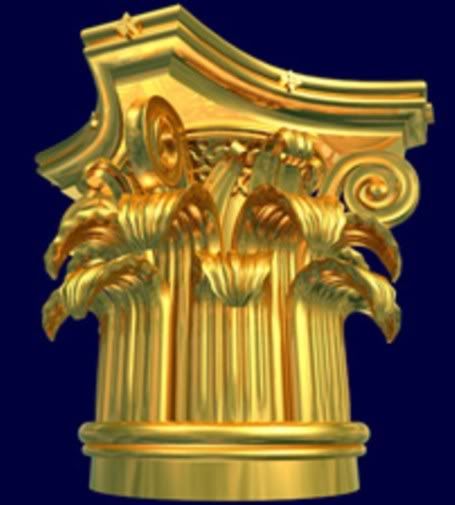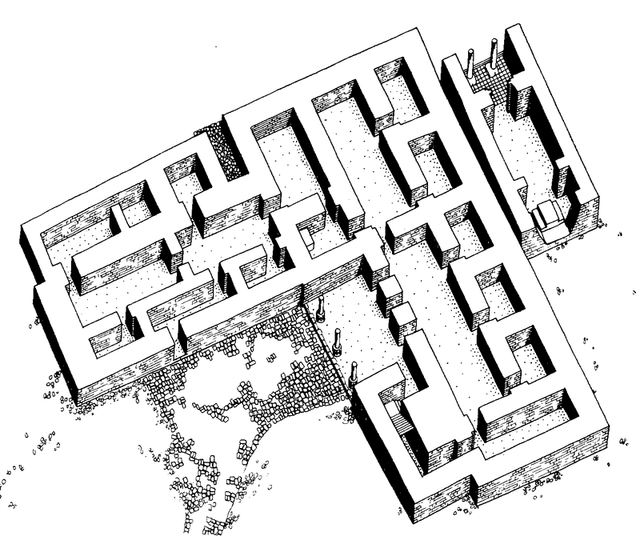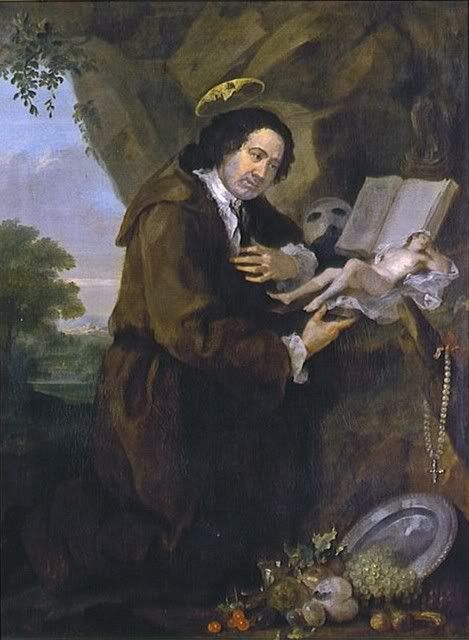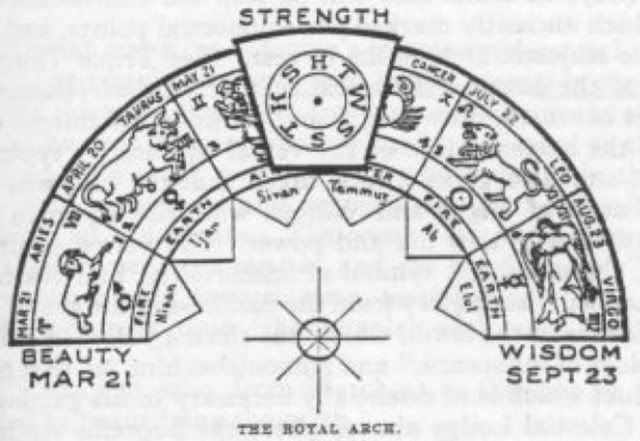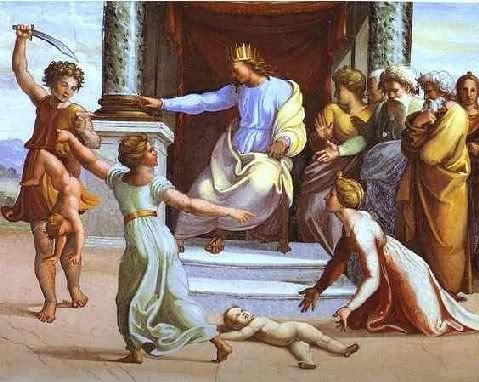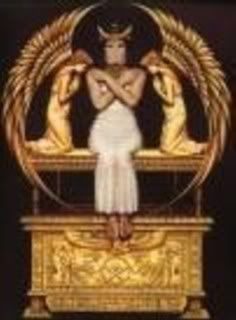|
|
Post by Tamrin on Jul 14, 2008 7:27:11 GMT 10
Which Hiram and Why?Desaguliers’ Hiramic legend, describing the manner of death suffered by Hiram Abiff, goes well beyond the biblical account of Huram-abi. The closest to such a triple assault in a Solomonic context is in The Song of Solomon or Canticles 5:7, where we read of Solomon’s black but comely lover declaring: " The watchmen that went about the city found me, they smote me, they wounded me; the keepers of the walls took away my veil from me” (the term for the last assault presumably being a euphemism for rape). Perhaps significantly, she was described as the Rose of Sharon (2:1), that rose being characteristic of the Rose Croix degree, in which it is commonly said to represent Christ. There appears to have been some confusion between references to the several "Hirams" in the Bible (or perhaps suspicion that the Biblical references were confused): There are the two Hirams with which we are most familiar, namely Hiram, King of Tyre and Hiram Abiff (Huram-abi). Additionally, J.S.M. Ward (pp.5/18) has drawn our attention to: Ab[H]iram (e.g., Numbers 16:1 & I Kings 16:34); Adon[H]iram (e.g., 1 Kings 4:6 &12:18); and/or Had[H]oram (II Chronicles 10:18). None of whom were subjected to the manner of death described in the 3° (although most suffered a violent end). Please note, of the suffix “abi” or “abiff,” while most modern translations render it as “father,” the earlier translations, with which Desaguliers would have been most familiar, rendered it as “master” or, more specifically, as “master craftsman.” Going beyond the Bible, we find that Josephus, the first century Jewish historian ( Against Apion, Book 1, 18:118/9), relates of Hirom (Hiram), King of Tyre, that: He raised a bank on that called the Broad place, and dedicated that golden pillar which is in Jupiter’s temple; he also went and cut down timber from the mountain called Libanus, and got timber of cedar for the roofs of the temples. He also pulled down the old temples, and built new ones: besides this, he consecrated the temples of Hercules [meaning “glory of the goddess Hera”] and Astarte. He first built Hercules’s temple, in the month of Peritus, and that of Astarte when he made his expiation against the Tityans, who would not pay him their tribute; and when he had subdued them to himself, he returned home. We read of this period that:In about the tenth century, most of the Phoenician cities threw out their old pantheons, and set up a pair of deities. In Tyre it was Melkart (male) and Astarte (female), in Byblos it was Baalat Gebal (female) and Baal Shamem (male), and in Sidon it was Astarte (female) and Eshmun (male). Melkart (who became Herakles or Hercules to the Greeks) seems to have no antecedents in the previous millennium. In Israel it was Asherah and Ba'al. From a geo-political perspective perhaps what was happening was part of an intermediate stage between the collapse of Egyptian control over their province of Retjenu and the rise of Assyria, Babylon then Persia to fill that power vacuum. In that brief interlude, local kings replaced the Egyptian Viceroys, Judges and Governors and adopted local names for the deities of the new city states, (although based on the Egyptian forms with which they were acquainted), before ultimately being replaced by Persian Satraps. 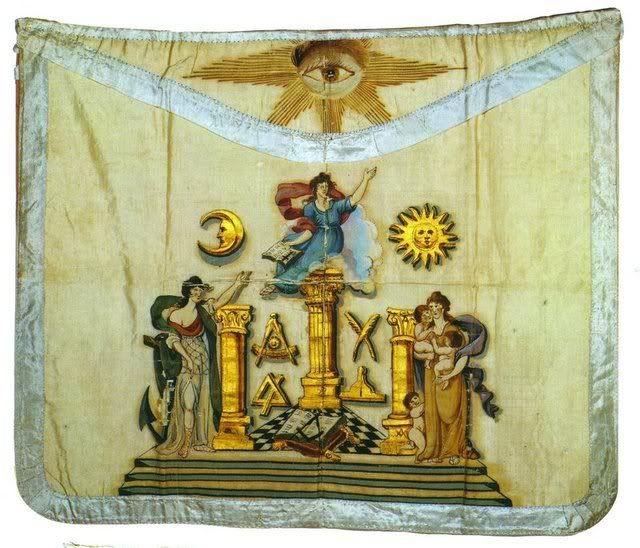 The Huram-abi in the bible is said to have created the pillars at the porch or entrance to KST while the Hirom described by Josephus is particularly associated with the creation of a golden pillar inside a “pagan” temple (for the Biblical writers all such pillars were suspect). Thus, for Desaguliers and others, the name “Hiram” in connection with the building of a temple and especially with the construction of its three, named and free-standing "pillars" would have had connotations which would emphasis what was anachronistically referred to as Solomon’s apostasy. Adding to the confusion of accounts and bearing in mind the possibility of "Abiff" signifying "my father," we turn to the Table of the Chief Architects, as provided by Heinrich Brugsch-Bey, in Egypt Under the Pharaohs, p.17. Therein we find that, in the epoch year 965 BCE, Hor-em-saf I was Egypt's Chief Architect, followed by Mermer, who in turn was followed by Hor-em-saf II in the epoch year 900 BCE!? Sources:H. Brugsch-Bey, 1996 (org. 1902), Egypt Under the Pharaohs, Bracken Books, London E.W. Heaton, 1974, Solomon's New Men, Thames & Hudson, London J.S.M. Ward, n.d., Who was Hiram Abiff?, The Baskerville Press, London
|
|
|
|
Post by Tamrin on Jul 14, 2008 7:27:45 GMT 10
The Archaeological RecordWhile modern archaeological findings cannot have influenced Desaguliers and his contemporaries, they may be of interest to us in understanding the period attributed to Solomon. We find (Finkelstein & Silberman, pp.123/145), there is no evidence of a 'golden age' associated with Solomon, nor indeed any evidence that there ever was such a king. Jerusalem at the time could have been no more than a scattered settlement, barely qualifying as a village. Of what we do find, as Professor Cyrus Gordon observed (Eliot, p.49): ‘ If we had no Bible but only the information provided by Palestinian archaeology, we would think that Israelite religion was mainly the worship of Astarte [Asherah].’ On the one hand, the archaeological record casts doubt on the possibility of the Canaanites and Hebrews having been separate and distinct peoples. On the other hand, the name ‘Asherah’, dates from the monarchic period, by which time the Hebrews, if they were ever a distinct group among the Canaanites, were the dominant group. Moreover, thousands of what archaeologists significantly call ‘Pillar Figurines’ and thought to have been used in the informal worship of Asherah, also date from this time. Pillar figurines Dame Kathleen Kenyon provides the following: Isometric view of the eighth-century palace and adjacent temple in the ‘second building period’ at Tell Tayinat in south-east Turkey. Although later than Solomon’s palace and Temple in Jerusalem, this excavation (from 1935 to 1938, but only published in detail in 1971) is often cited as the best parallel to his close association of palace and temple, which was more like a ‘royal chapel’, immediately adjacent to the palace and on a comparatively small scale. The temple (upper right), like Solomon’s is divided into three areas. Note the two pillars at the porch or entrance
Note also the altar being off-set to left rather than centered.
Presumably an object was placed to the right. ReferencesEliot, Alexander, 1979, ‘The Realm of the Mother Goddess’, in J.J. Thorndike, (Editor), Discovery of Lost Worlds, American Heritage, New York Finkelstein, Israel & Silberman Neil Asher, 2002, The Bible Unearthed: Archaelogy’s New Vision of Ancient Israel and the Origin of its Sacred Texts[/i], Touchstone, New York Kenyon, Kathleen M. 1987, The Bible and Recent Archaeology (revised edition), British Museum Publications, London
|
|
|
|
Post by Tamrin on Jul 14, 2008 7:28:16 GMT 10
Another reason why Desaguliers’ Code may have fallen out of favour within Freemasonry and eventually out of remembrance during the prudish Victorian Age may have been a desire to distance perceptions of the institution from the memories and perceptions of other, less reputable societies, such as the " Hellfire Club" and the Beggar’s Benison, which had pursued distorted versions of similar ideas much more literally than Desaguliers, for his part, appears to have intended. Prof. David Stevenson tell us (op. cit.) that: Many of the huge number of clubs founded in the eighteenth century conform at least in part with this stereotype, with bawdiness and obscenity common. But the Benison seems to represent an extreme of the genre. Although serious students of Fraternal Studies may naturally tend to shy from such salacious reports, I suggest the common yet remarkable phenomenon of these bawdy societies is deserving of greater attention. Portrait of Sir Francis Dashwood, 15th Baron le Despencer (1708-1781), founder of the "Hellfire Club,"
by William Hogarth (1697-1764) from the late 1750s, parodying Renaissance images of Francis of Assisi.
|
|
|
|
Post by Tamrin on Aug 6, 2008 19:45:17 GMT 10
Royal ArchAfter the creation of the third degree and its Hiramic Legend around 1726, Freemasonry soon spread to the Continent, with the Grand Orient of France (GOdF) being establish only a couple of years later in 1728. Bearing in mind that Desaguliers and disproportionate number of other members of the premier grand lodge were Protestants from France (Huguenots), we note the proliferation of degrees on the Continent (the ‘degree fever’ which exasperated many conservative English Freemasons) which, in many cases, elaborated on the general theme established by Desaguliers. Meanwhile, English Freemasons were diverted from that theme by another, which also purported to repair that which was lost, revealing the genuine secrets of a Master Mason. We read (Jones, Compendium, p.199): In 1751 the grand lodge styling itself (at first) The Most Ancient and Honble Society of Free and Accepted Masons (sic) was established, claiming to have been begun several years earlier and also claiming to perpetuate a more ancient or rather ‘antient’ tradition than that of the premier grand lodge, the Grand Lodge of London, later the Grand Lodge of England (which the new grand lodge justly accused of having introduced many innovations). They claimed to be ‘Antient’ Freemasons and, by default, the premier grand lodge, although established before that of the ‘Antients’ came to be known as the ‘Moderns.’ According to Leo Zanelli: As mentioned, ‘degree fever’ eventually become a social phenomenon of the 1700s. But not with the premier Grand Lodge (called the ‘Moderns’) because they insisted, for over 70 years, that Masonry consisted of three degrees only – and that most certainly did not include the Royal Arch. To take just one example among many, in 1767 Samuel Spencer, Grand Secretary of the premier Grand Lodge, replying to a query about the Royal Arch, wrote: ‘The Royal Arch is a society which we do not recognize and which we hold to be an invention to introduce innovation and to seduce the brethren.’
It’s almost certain that Spencer himself didn’t know the truth when decrying the Royal Arch as an innovation, because the premier Grand Lodge called the Antients ‘innovators’ – when in fact they had lit the fuse themselves with the introduction of the third degree. On the other hand, the Antients – and others – embraced the degree ethic with enthusiasm. Their rivalry continued until 1813 when they merged, establishing the United Grand Lodge of England. A major difference between the two had been the standing of the Royal Arch degree. The ‘Moderns’ had no place and indeed no patience for it, whereas for the ‘Antients’ it was the crux, core and completion of Freemasonry. Jones tells us ( Compendium, pp.504/5): In the early years of the conflict between the ‘Moderns’ and ‘Antients’ no one thing more clearly differentiated one side from the other than the former’s official ignorance of Royal Arch Masonry and the latter’s eager adoption and encouragement of it. Whereas the ‘Antients’ regarded it as the ‘Root, Heart and Marrow of Free Masonry’: the Grand Secretary of the ‘Moderns’ in 1759, in answer to an ‘Antient’ Brother who had requested his charity, said, ‘we are neither Arch, Royal Arch, nor Antient.’ In course of time, it is true, the ‘Moderns’ founded the Grand Chapter, the first Grand Chapter in the world, but this was an official move on the part of the Grand Master, and did not kill their natural hostility to Royal Arch Masonry. Even as late as 1792 an official utterance of the Grand Lodge of England was to the effect that it had ‘nothing to do with proceedings of the Society of Royal Arch Masons. It is a curious anomaly that, while the ‘Antients’ claimed to practice only the ancient rites but encouraged the Royal Arch, the ‘Moderns,’ whom the Masonic world at home and abroad accused of ‘innovation,’ officially frowned on the Royal Arch, which, so far as the consensus of opinion goes, was itself an innovation wholly or in part. Elsewhere, Jones described how the ‘Moderns’ innovation of the third degree prepared the way for the ‘Antients’’ innovation of the Royal Arch degree, saying ( Book of the Royal Arch, pp33/4): The general adoption of the Hiramic Degree throughout English freemasonry by the middle of the eighteenth century should be emphasized because it means much to the R.A. mason. Failing its introduction, the R.A. might never have become a part of the Masonic Order. Let it be remembered that the mason of the early lodges was in general a religious and relatively simple soul. The story unfolded by the Hiramic legend prepared his mind for yet another story, this one serving to make good two things that were absent from the earlier degrees. The three-degree system, ending in what may appear to be disappointment and anticlimax, prepared the way for the introduction of a degree which new or otherwise, was accepted particularly by the opponents of the Premier Grand Lodge as part of an ancient system. The hostility between the ‘Moderns’ and ‘Antients’ over the Royal Arch degree may be quite significant regarding our present study. Some hostility towards the degree was to be expected, partly because any major difference between their respective customs would inevitably have been latched on to as proof of the irregularity of the other; partly because in purporting to restore the ‘genuine secrets of a Master Mason,’ the degree diverted attention from Desaguliers’ Code; moreover, they suggested the ‘secrets’ were only to be found beyond the three Craft degrees (wherein Desaguliers had left his clues). Even more significantly, the ‘Moderns’ would have objected to the original context of the Royal Arch degree. Most Royal Arch Freemasons today are used to the degree being set in the context of Zerrubabel building the second temple and finding the ‘secrets’ in the ruins of the first. However, there has been a change in the degree every bit as radical as the innovations attributed to Desaguliers. The Royal Arch degree was originally set in the context of King Josiah finding the ‘secrets’ while repairing the first temple and those repairs are still the context in which the degree is set in Ireland, whence many of the Antients’ roots appear to lie. The context of Josiah’s discovery had the benefit of scripture but the disadvantage of its cult hero having been the intolerant and ruthless king who waged the fiercest pogrom against the devotees of Asherah (his purported ‘discovery’ conveniently endorsed the unpopular but politically expedient revolution he had already begun). In other words, in restoring the lost secrets, the examples used were on opposite sides of the same conflict. Josiah’s attitude and actions would have been anathema to those aware of the lesson of tolerance and inclusion Desaguliers had encoded in the Third Degree. Therefore, the contextual change from Josiah to Zerrubabel may appear to have been a drastic move to make the degree more palatable to the ‘Moderns.’
|
|
|
|
Post by Tamrin on Aug 21, 2008 21:19:34 GMT 10
Looking at the most famous demonstration of Solomon's wisdom, his decision as to the mother of a child claimed by two "harlots." One of the meaning of the Hebrew word translated as "harlots" in I Kings 3:16 of the KJV is " to be a cult prostitute," see Crosswalk.com. Have we stumbled again upon the Holy Ones—the priests and priestesses of Asherah—the Kadoshim? If so (& if he existed), Solomon's intervention, in an otherwise trivial affair become explicable: He and the earthly representative of the goddess would have presided over the cult and they would have had particular responsibility in the settlement of such disputes. Also explicable would be the openness of the women concerned, appearing before the king in open court: Each being a Kadoshah, they would have been respected (at that time) priestesses, having a sacramental ministery, rather than being common prostitutes. The account smacks of being an oral tradition, too important to be left out entirely and being instead perverted and discredited by the biblical writers, following King Josiah's ruthless pogrom. |
|
|
|
Post by Tamrin on Aug 24, 2008 22:16:43 GMT 10
|
|
|
|
Post by Tamrin on Aug 25, 2008 15:36:25 GMT 10
The Assistant High Priest
Prepared by W. Bro. Gordon J. Row, May 1995
From “Q. & A.”—Quatuor Coronati Lodge No. 2076—Summons for 22nd June 1995 Meeting. Q. Why did the High Priest entrust the dedication of King Solomon’s Temple to his Assistant instead of doing it himself?A. There is a dreadful confusion in this question, largely caused by some of the compilers of our ritual who were never content to leave well alone. Determined to dot all the i’s and cross all the t’s, whenever they came to a problem they could not solve they invented—with disastrous results. First, let it be clear that, according to the Bible, neither the High Priest nor “his Assistant” played any part in the dedication of the Temple and, indeed, they are not mentioned at all in the context. Solomon presided alone, he spoke and he prayed. (I Kings, viii, and II Chron., vi and vii.) The pillar Jachin appears in I Kings, vii, 21 and II Chron., iii, and it was named, according to custom in Bible lands, with an allusive or commemorative name which means “He (God) will establish”. Neither the pillar nor its name had anything to do with Jachin, the wrongly styled ‘Assistant High Priest’. That name appears at the head of the 21st division of Priests, among the twenty-four divisions listed in I Chron., xxiv. It must be emphasized, however, that no Priest is named in the accounts of the dedication of the Temple, either in Kings or Chronicles. Having established the facts of the Bible story, we may now turn to the offending phrases in the ritual, where, at the relevant point in the S.W’s examination of the Candidate, we are told that the pillar, Jachin, was: so named after Jachin, a priest who assisted at its [the Temple’s] dedication. There are numerous versions of this statement, all in the same vein. Some rituals say ‘who officiated’; some call him the ‘Assistant High Priest’ and every one of these attempts to fill in the details of the story simply adds to the confusion. To summarize; (a) The two pillars are completed and named before the dedication of the Temple and each of the names was designated to symbolize or express Solomon’s gratitude to The Almighty. Neither of them was named after a Priest. (b) Jachin certainly did not officiate at the dedication. If he assisted at all (and he was certainly not mentioned in that connection) he assisted only by his presence, in the same way as guests are deemed to “assist”—by their presence alone—at a wedding. (c) The Masonic use of the pillar name belongs strictly to the pillar alone. The introduction of the ‘priest who officiated’ is an error arising from the excessive zeal of the compilers of the ritual |
|
|
|
Post by Tamrin on Aug 25, 2008 15:42:16 GMT 10
Purporting that the two pillars at the porch or entrance had been named after individuals may have been a further clue as to the identity of the Temple's third named pillar, which was named after the goddess Asherah and stood in the Sanctuary. |
|
|
|
Post by Tamrin on Sept 1, 2008 6:39:28 GMT 10
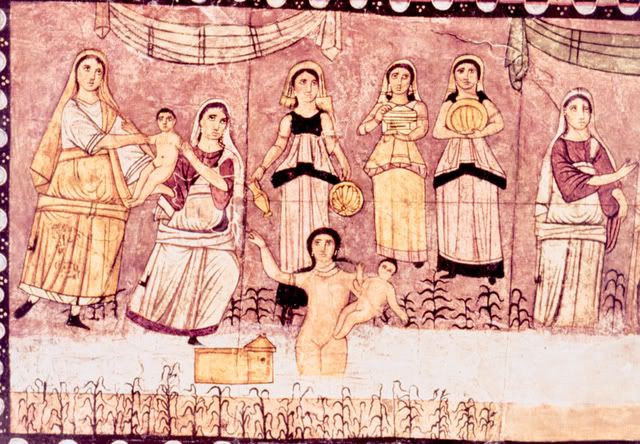 Moses saved by the "Lady of the Waters," Dura Synagogue Moses saved by the "Lady of the Waters," Dura Synagogue |
|
|
|
Post by Tamrin on Sept 3, 2008 7:35:17 GMT 10
"Further Reflections on the Third Degree Puzzle"
by Rev. Bro. Neville Barker Cryer
Did You Know This Too?, 2005, Lewis Masonic (Ian Allen Publishing Ltd.), Surrey, U.K., p.66
Bearing in mind that "Shekinah" is a feminine term, referring to the divine presence,
the following excerpt from the works of this noted masonic scholar may be of interest: |
|

